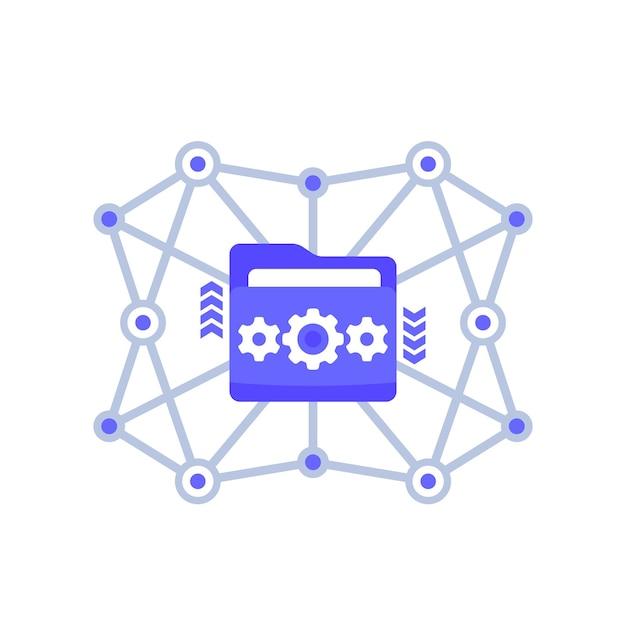In today’s fast-paced world, where organizations heavily rely on technology to streamline their operations, having a robust and efficient network infrastructure is crucial. This is where Active Directory comes in. Active Directory, a service provided by Microsoft, acts as the foundation for managing and organizing resources such as user accounts, computers, and applications within a network environment.
In this comprehensive blog post, we will explore the benefits of Active Directory and answer common questions, such as the main purpose of Active Directory, enabling LDAP, components of Active Directory, and more. Whether you’re a beginner looking to understand Active Directory or someone seeking advanced configuration knowledge, this post will provide valuable insights into harnessing the power of Active Directory to optimize your network management.
So, if you’re ready to delve into the world of Active Directory and unlock its potential for enhancing your network efficiency, let’s get started!

Benefits of Active Directory
Active Directory is not just a fancy name for a gym membership; it’s an invaluable tool for managing your network. Let’s dive into some of the key benefits that Active Directory brings to the table.
Simplified User Management
With Active Directory, you can bid farewell to the days of manually managing every user account on your network. Say goodbye to sticky notes with forgotten passwords and hello to streamlined user management. Active Directory allows you to create and manage user accounts easily, granting or revoking access with just a few clicks. It’s like having your very own bouncer for your network’s VIP area.
User Access Control Made Easy
Gone are the days of worrying about who has access to what. Active Directory lets you define user roles and assign specific privileges, ensuring that each user has just enough power to get the job done and not accidentally delete your important files. Think of it as assigning specific areas of your network to different superheroes with their unique superpowers. With great power comes great Active Directory!
Centralized Resource Management
Picture this: a world where you can easily manage all your network resources from one central location. Well, with Active Directory, that world becomes a reality. Whether it’s managing file shares, printers, or even Wi-Fi access, Active Directory provides a single interface to rule them all. No more running around with a bunch of keys or deciphering cryptic IP addresses. It’s like having your very own personal assistant for network management (minus the annoying coffee runs).
Enhanced Security Features
In an age where cybersecurity threats lurk around every corner, Active Directory comes to the rescue with its arsenal of security features. It offers comprehensive authentication and authorization mechanisms, ensuring that only the right people gain access to your network. You can set up password policies, enable multi-factor authentication, and even implement smart card authentication. Active Directory is like a cybersecurity fortress, equipped with invisible force fields to keep the bad guys out.
Single Sign-On Convenience
Raise your virtual hand if you have a gazillion passwords to remember. Don’t worry; I won’t tell your IT department. Active Directory solves this password predicament by enabling single sign-on (SSO). With SSO, you can log in once and gain access to multiple applications or services, saving you from password-induced headaches. It’s like having a magical key that unlocks every door in your network kingdom.
Time-Saving Group Policies
Creating a network environment where every user has the same settings can be a tedious task. But fear not, for Active Directory’s Group Policies are here to save the day. With Group Policies, you can enforce consistent settings across your network, like desktop backgrounds, software configurations, and even internet browsing restrictions for those who can’t resist cat videos during work hours. It’s like setting up an army of obedient minions to ensure network conformity.
Scalability to Grow with Your Business
As your company expands, so will your network. Luckily, Active Directory has got your back. It’s designed to scale with your business, accommodating thousands (or even millions) of users and resources. Adding new users, groups, or devices is a breeze, saving you from migraines caused by scalability challenges. Active Directory is like a mythical creature that can shape-shift and grow as your network empire expands.
So there you have it – the benefits of Active Directory in a nutshell. From simplified user management to enhanced security features, Active Directory is the ultimate network superhero every administrator dreams of. So put on your cape, embrace the power of Active Directory, and conquer the network world like a true hero!
Keywords: Active Directory benefits, simplified user management, user access control, centralized resource management, enhanced security features, single sign-on convenience, time-saving group policies, scalability

FAQ: What are the benefits of Active Directory?
In this FAQ-style subsection, we’ll explore some common questions about Active Directory and its numerous benefits.
Is LDAP Active Directory
No, LDAP (Lightweight Directory Access Protocol) is not Active Directory itself, but rather a protocol used by Active Directory to provide access to directory services. LDAP allows clients to access and interact with the directory data stored in Active Directory.
What is the main purpose of Active Directory
The main purpose of Active Directory is to serve as a centralized and hierarchical database for managing identities, resources, and security policies across a network. It allows organizations to efficiently manage user accounts, groups, computers, servers, and other resources in a structured and secure manner.
What are the benefits of Active Directory
Active Directory offers several benefits, including:
-
Centralized Management: Active Directory provides a single point of administration, allowing IT administrators to manage users, computers, and resources from a central location. This streamlines administrative tasks and reduces the complexity of managing a network.
-
Security: Active Directory offers robust security features, such as authentication and access control, to ensure that only authorized users have access to resources. It enables the implementation of strong password policies, multi-factor authentication, and encryption, enhancing the overall security of the network.
-
Scalability: Active Directory is highly scalable, making it suitable for organizations of all sizes. It can handle thousands or even millions of users, computers, and other objects, accommodating growth and expansion without sacrificing performance.
-
Integration with Other Services: Active Directory integrates seamlessly with other Microsoft services and applications, such as Exchange Server, SharePoint, and Office 365. This integration simplifies access management and enables single sign-on capabilities, improving user productivity.
-
Group Policy Management: Active Directory allows the creation and management of Group Policies, which are sets of rules and configurations applied to users and computers within the network. Group Policies enable consistent security settings, software deployments, and other configurations, reducing manual efforts and ensuring policy compliance.
Is Okta a LDAP
No, Okta is not a specific implementation of LDAP. Okta is a cloud-based identity management platform that provides single sign-on, multi-factor authentication, and other identity-related services. While Okta can integrate with LDAP directories, it is not an LDAP directory itself.
What does private DNS mode mean
Private DNS mode refers to a configuration in which the DNS (Domain Name System) resolution within a network is handled by a private DNS server instead of using public DNS servers. This allows organizations to maintain control over DNS resolution and enables the creation of custom internal domain names.
Is Active Directory an application
No, Active Directory is not an application in the traditional sense. It is a directory service provided by Microsoft that facilitates the management of network resources, including user accounts, computers, and security policies. Active Directory is an integral part of the Windows Server operating system.
Can I use 8.8.8.8 DNS
Yes, you can use the 8.8.8.8 DNS server as your DNS resolver. 8.8.8.8 is a public DNS server provided by Google. It offers reliable and fast DNS resolution and is widely used. However, it’s important to note that relying solely on public DNS servers like 8.8.8.8 may not be suitable for all network configurations, especially in enterprise environments.
Is changing DNS dangerous
Changing DNS settings is generally not dangerous, but it should be done carefully. Incorrectly configured DNS settings can result in network connectivity issues and make it difficult to access websites or resources. It’s advisable to document the original DNS settings and be cautious while making changes, especially in production environments.
What are the main components of Active Directory
Active Directory is made up of several key components, including:
-
Domain: A domain is a logical grouping of network objects, such as computers, users, and resources, within a specified boundary. It provides a security boundary for authenticating and authorizing access to resources.
-
Domain Controller: A domain controller is a server running the Active Directory Domain Services (AD DS) role. It stores and replicates Active Directory data, handles authentication requests, and enforces security policies within a domain.
-
Organizational Units (OUs): OUs are containers within a domain that allow further organizational structuring of network objects. OUs can be used to apply Group Policies, delegate administration, and organize resources based on business requirements.
-
Group Policy Objects (GPOs): GPOs are a collection of settings that can be applied to users or computers within a domain. They enable IT administrators to enforce security policies, control user environments, and manage software installations.
What is Active Directory for beginners
Active Directory is a database-driven directory service that helps organizations manage their network resources efficiently. It provides a centralized and organized approach to managing user accounts, computers, servers, and security policies. Active Directory simplifies administration, enhances security, and allows seamless integration with other Microsoft services.
How do I set up Active Directory
To set up Active Directory, you need to install the Active Directory Domain Services (AD DS) role on a Windows Server. This can be done through the Server Manager dashboard. Once the role is installed, you can promote the server to a domain controller and begin the configuration process.
What is command for Active Directory
Active Directory can be managed using various command-line tools. One commonly used tool is PowerShell, which provides a rich set of cmdlets specifically designed for Active Directory administration. With PowerShell, you can create users, groups, manage permissions, and perform various other tasks related to Active Directory management.
How do I configure DNS
To configure DNS in Active Directory, you would typically install the DNS Server role on your domain controller. Once installed, you can use the DNS Manager console to create DNS zones, configure forwarders, and manage DNS records. Proper DNS configuration is crucial for the proper functioning of Active Directory services and name resolution within the network.
By addressing these frequently asked questions, we hope to have shed some light on the benefits and functionalities of Active Directory. Remember, Active Directory is a powerful tool that simplifies network administration, enhances security, and improves overall efficiency.
